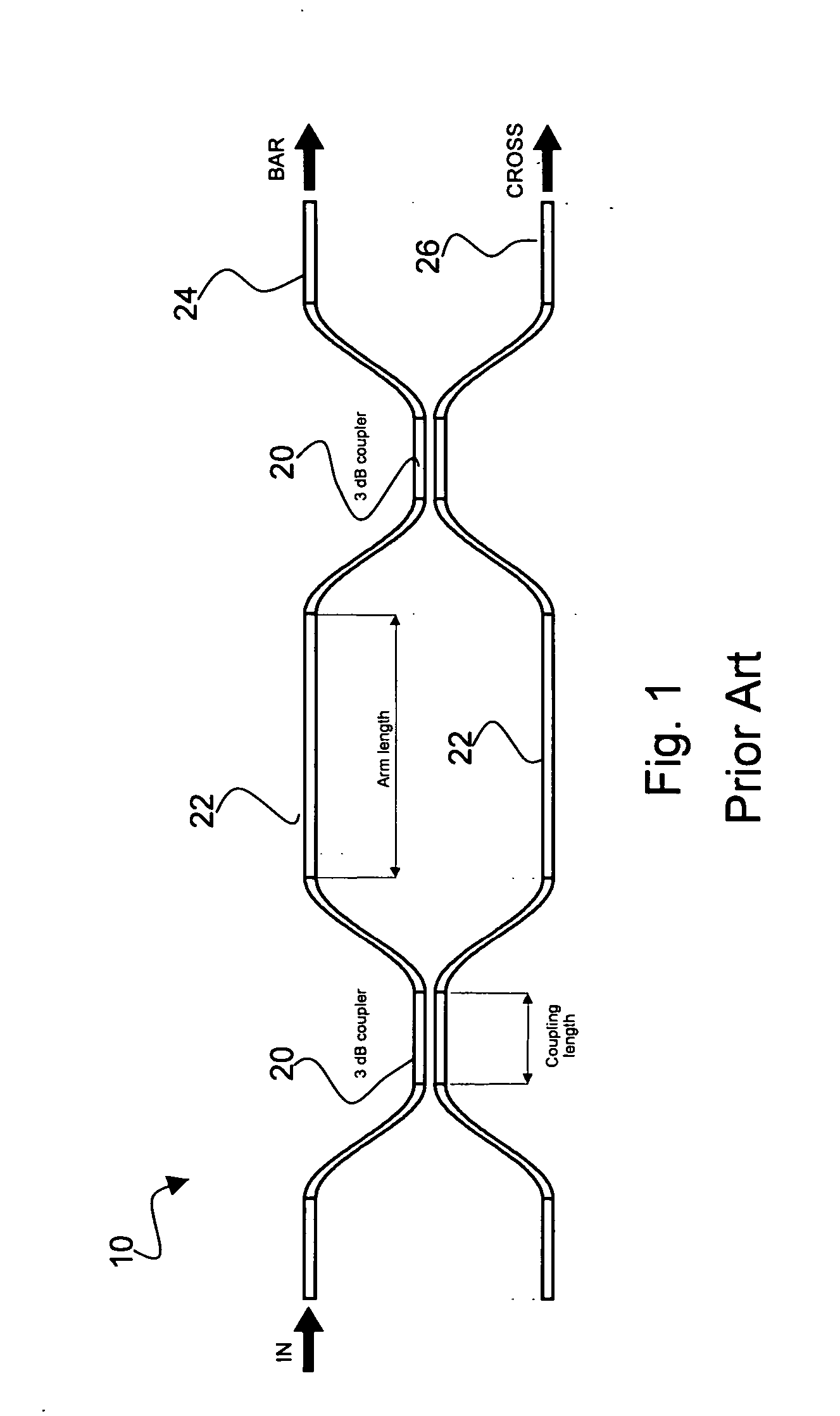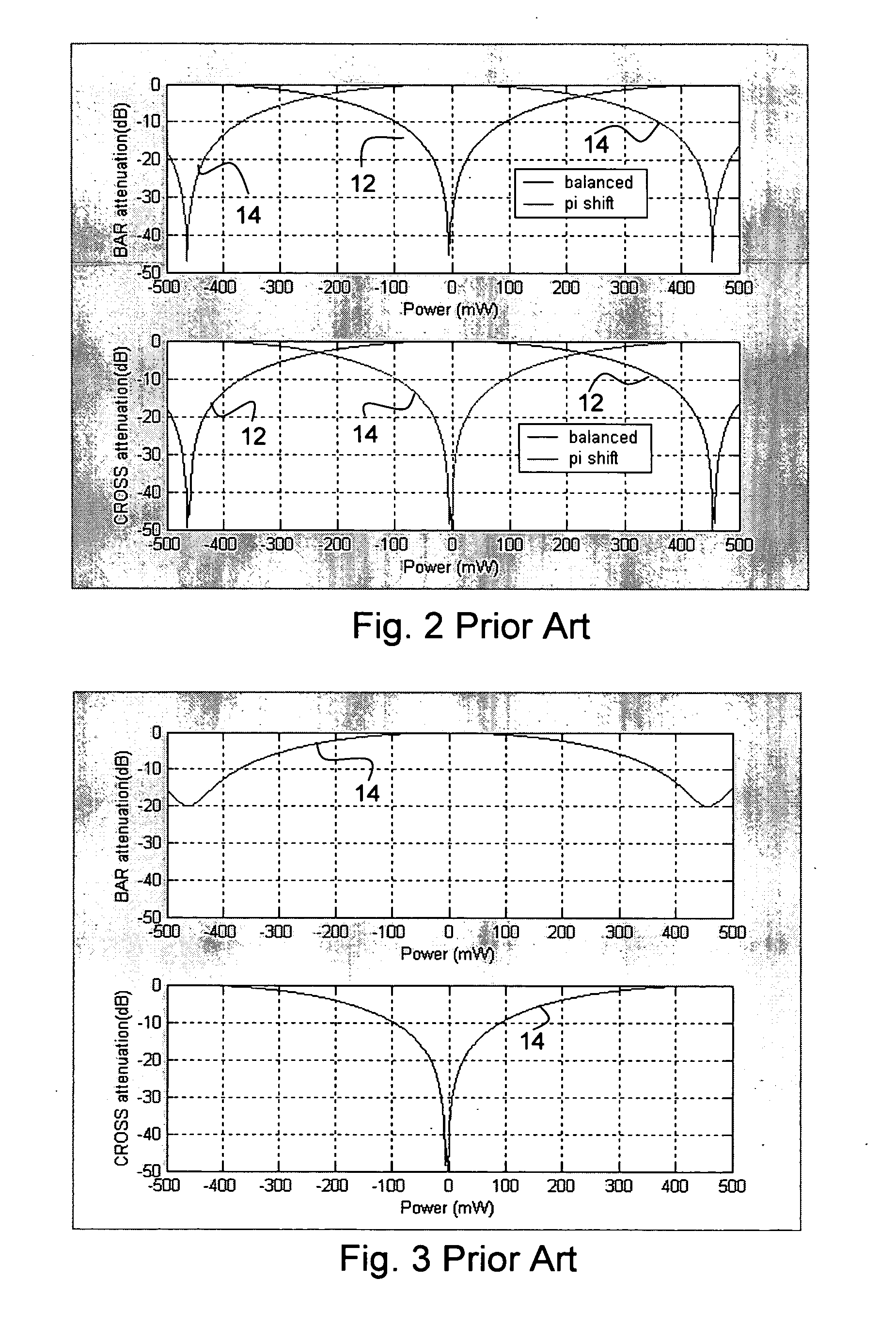Planar lightwave circuit variable optical attenuator
a variable optical attenuator and lightwave circuit technology, applied in the field can solve the problems of large pdl in the region of high signal attenuation, limit the extinction ratio of optical switches, and large power consumption of mzi devices on si substrates, so as to reduce the polarization dependent loss of variable optical attenuators
- Summary
- Abstract
- Description
- Claims
- Application Information
AI Technical Summary
Benefits of technology
Problems solved by technology
Method used
Image
Examples
Embodiment Construction
[0054] As shown in FIG. 1, a PLC MZI device 10 consists of two 3 dB directional couplers (DC) 20 or Y splitters that equally split / recombine light between two MZ arms 22. Thin film heaters 36 (see FIG. 10) are deposited on top of the upper cladding layer 31b (FIG. 10) directly above and running along the two MZ arms 22 to control the phase difference between them.
[0055] For a DC based MZI device, the two outputs from the device are denoted as BAR 24 and CROSS 26. A balanced MZI device has arms of equal length, resulting in the transmission through the device as a function of the electrical power applied to each one of the thin film heaters 36 shown in FIG. 2 as curve 12 (power applied to top heater negative, bottom heater positive). A Π shifted MZI has one of the 2 arms, for example the top one, longer than the bottom arm by an optical path length equal to Π / 2, reversing the behavior of the 2 outputs from the balanced case, as shown in FIG. 2 as curve 14. As seen in FIG. 2 the resp...
PUM
| Property | Measurement | Unit |
|---|---|---|
| power | aaaaa | aaaaa |
| switching power | aaaaa | aaaaa |
| width | aaaaa | aaaaa |
Abstract
Description
Claims
Application Information
 Login to View More
Login to View More - R&D
- Intellectual Property
- Life Sciences
- Materials
- Tech Scout
- Unparalleled Data Quality
- Higher Quality Content
- 60% Fewer Hallucinations
Browse by: Latest US Patents, China's latest patents, Technical Efficacy Thesaurus, Application Domain, Technology Topic, Popular Technical Reports.
© 2025 PatSnap. All rights reserved.Legal|Privacy policy|Modern Slavery Act Transparency Statement|Sitemap|About US| Contact US: help@patsnap.com



